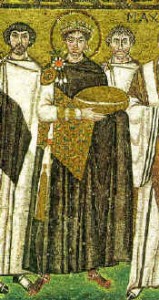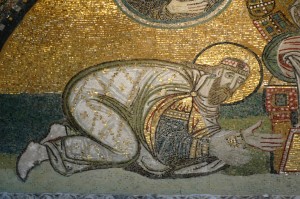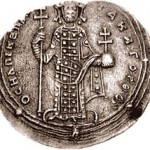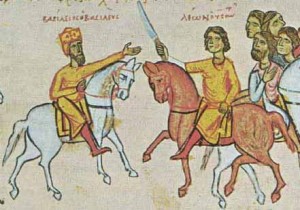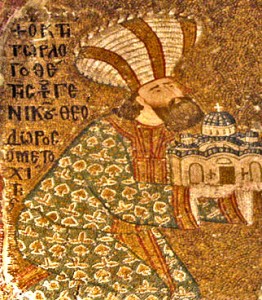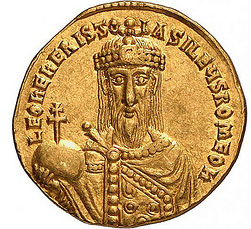What did a cataphract look like?
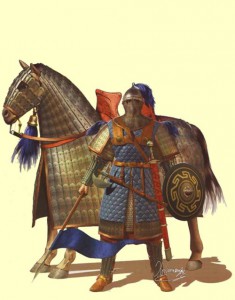 The backbone of the Byzantine army when it dominated the Mediterranean was the feared cataphract. But what exactly- as Joseph asks- was a cataphract? The short answer is the Byzantine version of the knight on horseback. The Roman term was clibanarii which somewhat hilariously translates as ‘furnace’- probably an apt description of what it felt like to wear the armor on a sunny day.
The backbone of the Byzantine army when it dominated the Mediterranean was the feared cataphract. But what exactly- as Joseph asks- was a cataphract? The short answer is the Byzantine version of the knight on horseback. The Roman term was clibanarii which somewhat hilariously translates as ‘furnace’- probably an apt description of what it felt like to wear the armor on a sunny day.
There were three protective layers to bake in. The first (peristhethidion) was a padded leather jacket with short sleeves (a pair of greaves covered the arms) and a padded skirt faced with mail or scales to protect the legs. Over that was the klivanion, a mailed covering of the chest and shoulders, complete with a metal helmet hung with mail to cover the face (excepting the eyes). The final layer was the epilorikion, a padded cotton or thickly-stitched silk surcoat which would identify rank or unit. The poor horse- who had to carry this weight- was also covered with an iron headpiece and a thick ox-hide or laminated felt draping.
The cataphract carried a small round shield and a relatively short spear (roughly 8 feet long). In addition to this they carried two swords- one slightly curved, the other straight and double-sided. Some also carried a short bow or various kinds of maces and axes.
For the Roman empire they were never more than a small, peripheral force. The late 4th century document Notitia Dignitatum which records the administrative organization of the imperial armies mentions that there were 9 units of heavily armored knights, which means that they made up roughly 15% of the field army.
They seem to have gradually faded from use (completely vanishing by the 7th century) until their sudden emergence as the preferred troops of the terrifying emperor Nicephorus Phocas. In fact, most of what we know about them comes from the military manual that the emperor himself wrote (Praecepta Militaria) around the year 965 AD. But their renaissance proved short. Nicephorus’ (eventual) successor Basil the Bulgar-Slayer seems not to have used them, largely replacing them with his newly created Varangian Guard. After the military disaster of Manzikert in 1071, the imperial armies were largely mercenary and far less formidable. With the brief exception of the army of Manuel Comnenus, the empire never fielded a significant land force again.



